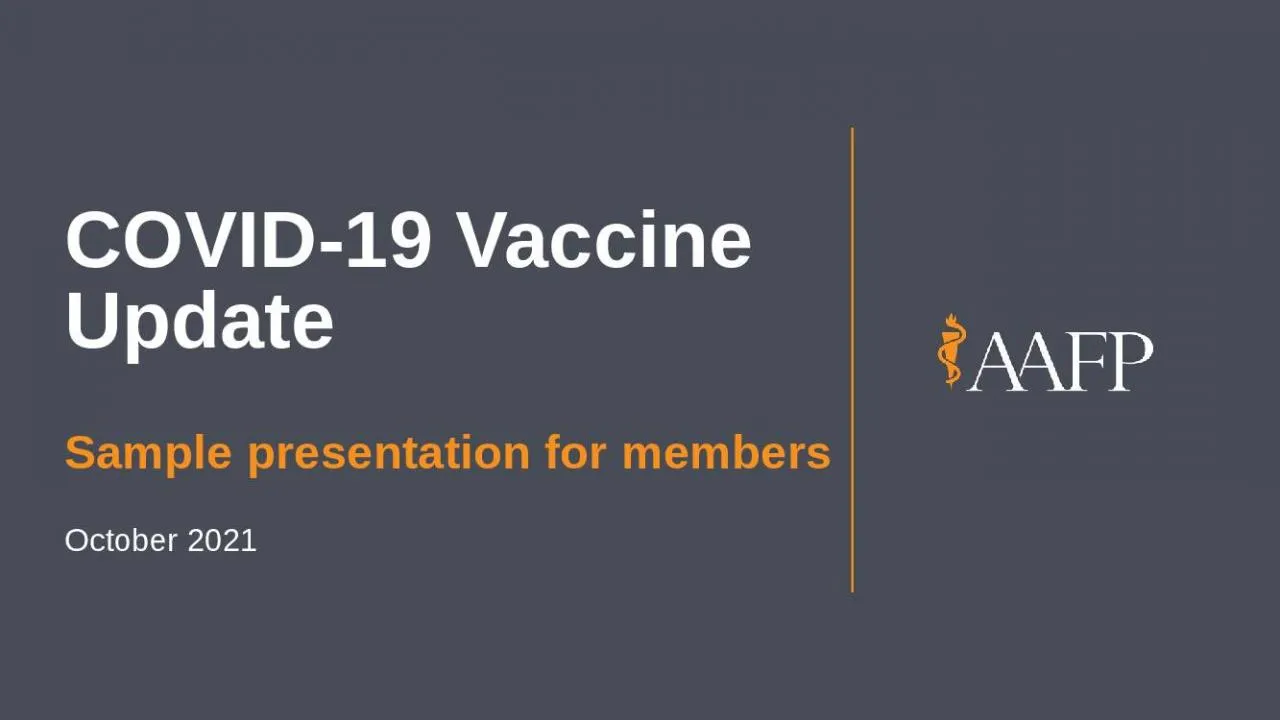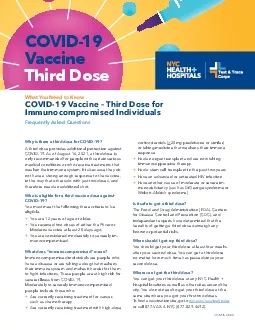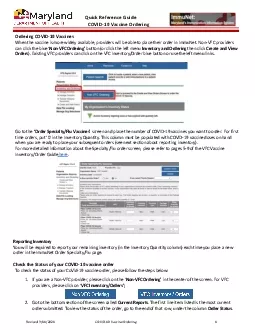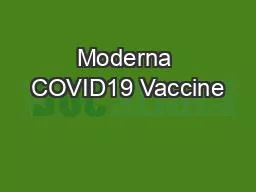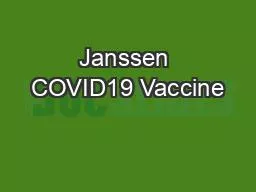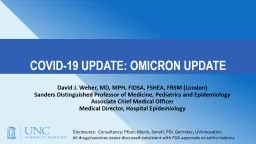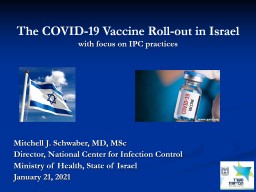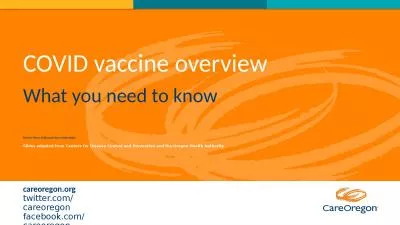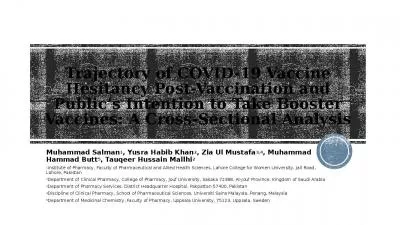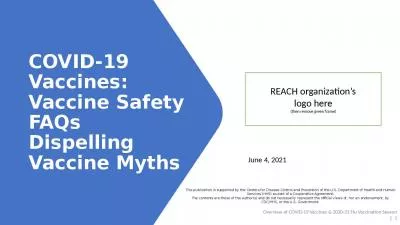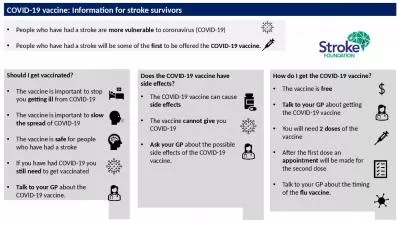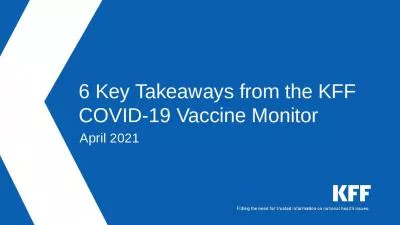PPT-COVID-19 Vaccine Update Sample presentation for members
Author : elina | Published Date : 2022-02-12
October 2021 Coronaviruses in General Coronavirus is a name derived from the Latin corona meaning crown The viral envelope under the electron microscope looks crownlike
Presentation Embed Code
Download Presentation
Download Presentation The PPT/PDF document "COVID-19 Vaccine Update Sample presentat..." is the property of its rightful owner. Permission is granted to download and print the materials on this website for personal, non-commercial use only, and to display it on your personal computer provided you do not modify the materials and that you retain all copyright notices contained in the materials. By downloading content from our website, you accept the terms of this agreement.
COVID-19 Vaccine Update Sample presentation for members: Transcript
Download Rules Of Document
"COVID-19 Vaccine Update Sample presentation for members"The content belongs to its owner. You may download and print it for personal use, without modification, and keep all copyright notices. By downloading, you agree to these terms.
Related Documents

